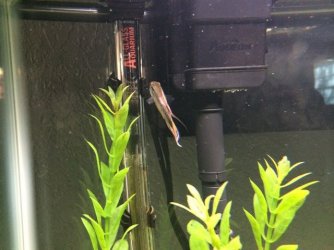We survived cycling. Everything was going so smoothly. Then today my little boy woke up to a sick apisto. It's his favorite fish. The tank mates all look and act normal. There have been no changes to the tank in over a month. I have at least twice the filtration I need and the tank is 25 gal. We use the API master kit and test regularly, including today. Levels are all zero and always are. I did a 50% water change this morning. The tank has the apisto, 6 cory cats and a little angel. It has been difficult to get pics of this guy's ailment, so I'm just sending what I've got. Thanks so much!






 /freshaquarium.about.com/cs/disease/p/columnaris.htm
/freshaquarium.about.com/cs/disease/p/columnaris.htm